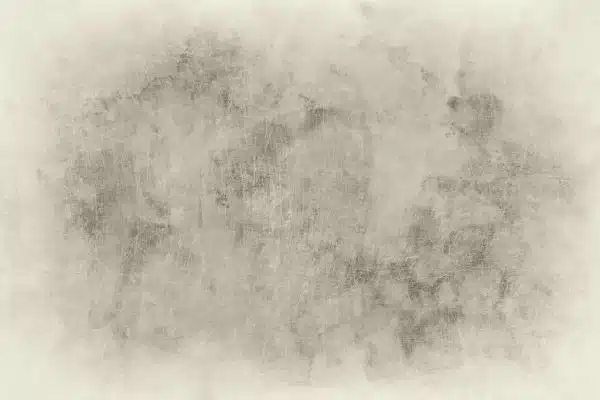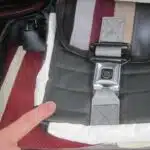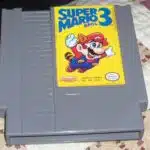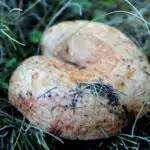As an automotive detailing expert, I have come across many challenges when it comes to maintaining the appearance of a car. One of the most common issues that car owners face is water stains on their vehicle’s exterior surfaces. These unsightly marks can be caused by various factors such as rainwater, sprinklers, and even washing your car with hard water. However, there are effective ways to remove water stains from your car without causing any damage to the paint or surface.
In this article, I will discuss simple yet effective methods for removing water stains from your car. By following these steps, you can restore the shine and lustre of your vehicle’s exterior while also protecting it from further damage. Whether you’re a seasoned car enthusiast or a casual driver who wants to keep their ride looking pristine, this guide is for you. So let’s dive in and learn how to remove those stubborn water stains!
Understanding Water Stains And Their Causes
Water stains are a common problem for vehicle owners, especially those who live in areas with hard water. When water droplets dry on your car’s surface, they leave behind mineral deposits that can be unsightly and difficult to remove. The causes of water stains can vary depending on the source of the water, but most often occur when tap water or rainwater is left to evaporate on the car’s surface.
To prevent water stains from occurring, it is important to take steps to minimize exposure to water. One effective method is to park your car in a covered area such as a garage or carport. If this is not possible, consider investing in a high-quality car cover that will protect your vehicle from rain and other types of precipitation. Additionally, avoiding washing your car in direct sunlight can help prevent water spots by allowing excess moisture to evaporate more quickly.
Another important factor to keep in mind when dealing with water stains is the quality of the water itself. Hard water, which contains high levels of minerals such as calcium and magnesium, can lead to more noticeable and stubborn stains than soft water. If hard water is a problem where you live, consider using distilled or deionized water for washing and rinsing your car. By taking these preventative measures, you can reduce the likelihood of developing unsightly water stains on your vehicle’s exterior.
Moving forward with removing those pesky stains requires adequate preparation for the task at hand.
Preparing Your Car For The Removal Process
Pre cleaning steps are essential before starting to remove water stains from your car. These steps include washing your car thoroughly with soap and water, rinsing it off properly, and drying it completely. You can use a microfiber towel or chamois cloth to dry the car’s surface, ensuring that there is no leftover water.
It is crucial to wear protective gear when preparing your car for the removal process. Water stains may contain harmful chemicals, which can cause skin irritation or respiratory problems. To avoid such issues, you should wear gloves, goggles, and a face mask while handling the cleaning products. Also, make sure to work in a well-ventilated area to prevent inhaling any toxic fumes.
Following these pre cleaning steps and wearing protective gear will not only ensure your safety but also contribute to the effectiveness of removing water stains from your car. Now that you are ready let’s move on to gathering the necessary tools and materials needed for the next step.
Gathering The Necessary Tools And Materials
When it comes to removing water stains from your car, it is crucial to have the right tools and materials at your disposal. Before you begin cleaning, take a look at the types of stains on your car’s surface. This will help you choose the appropriate cleaning products that will not only remove the stain but also protect the car’s paint.
There are different types of stains that can be caused by water damage. Some stains may be caused by hard water, while others may result from acid rain or sap from trees. It is important to identify these stains before choosing a cleaning product to avoid causing further damage to your car’s paint. Once you have identified the type of stain, select an appropriate cleaner that is specifically designed for that type of stain.
Choosing cleaning products can be overwhelming as there are numerous options available in the market. Always opt for cleaners that are gentle on your car’s paint and do not contain harsh chemicals that can cause discoloration or fading. You can also choose eco-friendly solutions like vinegar and baking soda that are safe for both your car and the environment. The next section will cover one such method in detail- using a vinegar and water solution- which is effective in removing water stains without causing any harm to your vehicle.
Transitioning into the subsequent section about ‘method 1: using vinegar and water solution’, we will delve deeper into how this solution can effectively remove stubborn water stains from your car’s surface without damaging its paint finish.
Method 1: Using Vinegar And Water Solution
Vinegar is a versatile and inexpensive solution that can be used to remove water stains from your car’s exterior. The acidic properties of vinegar help to break down the mineral deposits found in hard water, making it an effective cleaning agent. One of the benefits of using vinegar is that it is a natural solution that does not contain harsh chemicals that may damage your car’s paint or finish.
To prepare a vinegar and water solution, mix equal parts of white vinegar and distilled water in a spray bottle. Shake the bottle well to ensure that the solution is thoroughly mixed. Spray the affected area generously with the solution and let it sit for several minutes. Use a soft-bristled brush or cloth to gently scrub the area, then rinse off with clean water.
If you do not have access to vinegar, there are alternative solutions that you can use to remove water stains from your car’s exterior. For example, you can use a specialized cleaner designed for removing hard water stains or try using a mixture of baking soda and water. However, it is important to read the manufacturer’s instructions carefully before using any alternative solutions to avoid damaging your car’s paint or finish.
Transition: While vinegar may work wonders for removing mild to moderate water stains, more stubborn stains require an alternative approach. Method 2 involves using a clay bar which is specifically designed for removing contaminants such as tar, dirt, and grime from your car’s surface without causing any damage.
Method 2: Using A Clay Bar
Using a clay bar is an effective method for removing water stains from your car. However, it is not the only option available to you. There are other clay bar alternatives that you can use as well. It’s important to weigh the pros and cons of using a clay bar before you decide if it’s the right method for you.
Pros of using a clay bar:
- It effectively removes contaminants and water stains from your car’s surface.
- It leaves behind a smooth finish, which makes waxing or sealing easier.
- It is reusable, so you can get multiple uses out of one clay bar.
Cons of using a clay bar:
- It requires some skill and technique to use properly, which may be intimidating for beginners.
- If not used correctly, it can cause scratches or damage to your car’s paint.
- It can be time-consuming to use, especially if you have large areas of water stains on your car.
While using a clay bar is an effective way to remove water stains from your car, there are other options available to you. In the next section, we will explore another method: using a commercial water stain remover.
Method 3: Using A Commercial Water Stain Remover
- Before using a commercial water stain remover, it is important to thoroughly clean the affected area with a car wash soap in order to ensure the surface is properly prepped for the treatment.
- Once the affected area is dry, the water stain remover can then be applied using a soft cloth or brush in a circular motion until the stain is completely saturated with the product.
- It is important to allow the product to sit on the surface for the amount of time recommended by the manufacturer.
- After the product has been allowed to sit, it can then be washed off with water and a car wash soap to reveal a stain-free surface.
Preparing The Stain Remover
As an automotive detailing expert, I understand the importance of removing water stains from a car’s surface. Method 3 involves using a commercial water stain remover to efficiently tackle these stubborn stains. However, preparing the stain remover correctly is crucial for effective results.
The first step in preparing the stain remover is to read and follow the instructions on the product label carefully. Mixing solutions can be dangerous if not done correctly, so it is essential to take necessary safety precautions such as wearing gloves and protective eyewear. Additionally, ensure that the area you are working in is well-ventilated to avoid inhaling any harmful fumes.
Next, mix the commercial water stain remover solution according to the manufacturer’s instructions. Some products may require dilution with water before use, while others may need to be applied directly onto the affected area. It is essential to mix only what you need and avoid leaving any unused solution sitting around as it can lose its effectiveness over time.
In conclusion, preparing a commercial water stain remover correctly is crucial for effectively removing water stains from your car’s surface. Always refer to the manufacturer’s instructions and ensure that you take necessary safety precautions when mixing solutions. Finally, remember to apply only what you need and dispose of any unused solution properly.
Applying The Stain Remover
Now that we have discussed the importance of preparing a commercial water stain remover, let us move onto the next step: applying the solution to your car’s surface. Before starting, it is crucial to choose products that are safe for your car’s paint and finish. Avoid using harsh chemicals or abrasive materials that may cause damage or create more stains.
To apply the stain remover, start by shaking the bottle well to ensure that the solution is evenly mixed. Then, pour a small amount of the solution onto a clean microfiber towel or sponge and gently rub it onto the affected area in circular motions. Avoid applying too much pressure as this may cause scratches or further damage to your car’s surface.
After applying the stain remover, rinse off any residue with clean water and dry your car thoroughly with a clean microfiber towel. Repeat this process if necessary until all water stains are removed from your car’s surface. Remember to always read and follow the manufacturer’s instructions carefully for best results and avoid leaving any excess solution on your car’s surface for an extended period as this may cause damage.
In conclusion, applying a commercial water stain remover correctly requires careful consideration of product choice and avoiding damage to your car’s surface while effectively removing water stains. Always use gentle pressure when rubbing the solution onto your car’s surface and rinse off any residue thoroughly before drying. Following these steps will help you achieve a spotless finish on your vehicle.
Applying The Chosen Method To Your Car
Now that you have chosen the method to remove water stains from your car, it is time to apply it. The first step is to thoroughly wash your car with soap and water, then dry it completely. This will ensure that any loose debris is removed before applying the chosen method.
Once your car is clean and dry, you can start applying the polishing techniques. Depending on what method you chose, this may involve using a polishing compound or a specific product designed for removing water stains. Follow the instructions carefully and work in small sections at a time to avoid any damage to the paintwork.
To maintain the appearance of your car and prevent future water stains, there are some tips you can follow. One of the most important things is to avoid parking under trees or near sprinklers as this can lead to water spots. Additionally, regularly washing your car and drying it thoroughly after each wash can help prevent water stains from forming in the first place. By following these maintenance tips, you can keep your car looking great for years to come.
As you finish up with the polishing techniques and maintenance tips, it’s important to remember that scrubbing and rubbing techniques should be done carefully in order not to damage your car’s paintwork. In the next section, we will cover some effective scrubbing and rubbing techniques that will help remove even stubborn water stains without harming your vehicle’s exterior.
Scrubbing And Rubbing Techniques
When it comes to removing water stains from your car, scrubbing and rubbing techniques can be highly effective. The key is to use the right tools and products to achieve the best results. Before starting, make sure the surface of the car is clean and dry.
For tough water stains, effective products such as acid-based cleaners or clay bars can be used. These products are designed specifically for automotive detailing and can remove even the toughest of stains. It is important to follow the manufacturer’s instructions carefully when using these products, as they can damage paint if not used correctly.
Alternatively, if you prefer a DIY solution, a mixture of equal parts vinegar and water can work wonders. Simply apply the solution to a microfiber cloth and gently rub the stained areas in a circular motion. For more stubborn stains, you may need to repeat this process several times until the stain is completely removed.
Now that you have scrubbed or rubbed away the water stain from your car’s surface, it’s time to rinse off any remaining solution before moving on to the next step in your detailing process. To do this effectively, simply use a hose with a gentle stream of water or a spray bottle filled with clean water to rinse away any excess product. This will ensure that no residue remains on your car’s surface after cleaning.
Rinsing Off The Stain Removal Solution
As the old saying goes, “out with the old and in with the new.” After applying a stain removal solution to your car to get rid of those pesky water stains, it is essential to rinse off the residue. Rinsing techniques play a crucial role in ensuring that your vehicle is free from any remaining cleaning chemicals.
Start by using a high-pressure stream of water to remove any excess cleaning solution. Be mindful of not directing the water towards sensitive areas such as electrical components or paint chips. Instead, aim for a gentle flow of water to cover all parts of your car evenly. This process will ensure that no residue from the cleaning solution remains on your vehicle’s surface.
Now that you have successfully rinsed off your car, it’s time to move on to drying methods. Properly drying your vehicle is just as important as washing it, so don’t skip this step! Avoid using rough towels, which can cause scratches or swirl marks on your car’s paint job. Instead, opt for microfiber towels, which are soft and gentle on surfaces but still highly absorbent.
Transition: With proper rinsing techniques, you can make sure there is no remaining residue from the stain removal solution on your car’s surface. Next up: it’s time to dry your vehicle correctly!
Drying Your Car Properly
After rinsing off the stain removal solution, it is crucial to dry your car properly to avoid water spots. The first step is to properly use towels that are specifically designed for drying cars. These towels are typically made from microfiber material and have a high absorbency rate, making them ideal for removing excess moisture without leaving any lint or scratches on the surface of your car.
When using towels to dry your car, it is important to follow proper towel usage techniques. Start by gently placing the towel onto the surface of your car and lightly patting it down. Avoid rubbing or scrubbing as this can cause swirl marks on the paintwork. Instead, use a blotting motion to soak up any remaining water droplets.
While using towels is an effective way of drying your car, air drying is also an option that should not be overlooked. Allowing your car to air dry naturally after washing will give you a streak-free finish without causing any damage to the paintwork. Properly utilizing both towels and air drying methods will ensure that your car remains in pristine condition after removing those pesky water stains.
Transition into next section: Now that you have properly dried your car, let’s move onto waxing and polishing for added protection against future water stains and other contaminants.
Waxing And Polishing Your Car For Added Protection
To truly protect your car from water stains, it’s important to take preventative measures. However, adding a layer of wax and polish can also provide an extra level of protection against the elements. The benefits of waxing your car go beyond just aesthetics; it can help prevent damage from UV rays, dirt, and even rain.
When choosing the right polishing product for your car, it’s important to consider the type of paint and any previous treatments that have been applied. Some polishes may contain abrasives that can damage certain types of paint or remove previous coatings. Using a high-quality polish specifically designed for your car’s needs will ensure that you get the best results.
To apply wax and polish to your car, start by thoroughly cleaning the surface to remove any dirt or debris. Next, apply a thin layer of wax using a microfiber applicator pad or cloth, working in small sections at a time. Allow the wax to dry completely before buffing with a clean microfiber towel. For polishing, follow the instructions on your chosen product and work in small sections as well.
Remember that regular maintenance is key to keeping your car looking its best. With proper care and attention, you can prevent water stains and other damaging effects from taking hold on your vehicle’s exterior. In the next section, we’ll discuss some tips for preventing water stains in the future, so you can keep your car looking like new for years to come.
Preventing Water Stains In The Future
Preventive measures are essential in keeping your car free from water stains. One of the easiest ways to prevent water spots is to avoid parking your car under trees or close to sprinkler systems. These sources can cause hard water stains, which can be challenging to remove. In addition, try to park your car away from areas with bird droppings and sap, which can also leave unsightly marks on your car’s surface.
Investing in the best car cleaning products can also help you prevent water spots on your vehicle. Consider using a high-quality wax or sealant that creates a protective layer between your car’s paint and any contaminants that come into contact with it. Make sure you apply these products regularly for maximum protection against water stains.
Regular washing and drying of your vehicle are also crucial preventive measures. After every wash, make sure you dry your car thoroughly with a clean microfiber towel or chamois cloth. This will eliminate any remaining water droplets that could leave unsightly marks on your vehicle’s surface.
To avoid making common mistakes when removing water stains, it is important to understand the underlying causes of these spots. By taking preventive measures such as avoiding parking in certain areas and investing in the best cleaning products, you can reduce the likelihood of developing stubborn hard water stains on your car’s surface.
Common Mistakes To Avoid When Removing Water Stains
- When attempting to remove water stains from a car’s exterior, using abrasive materials such as steel wool or sandpaper should be avoided as this can damage the paint.
- Similarly, one should not use too much water when attempting to remove water stains, as this can cause damage to the paint and other components of the car’s exterior.
- Additionally, the use of harsh chemicals should be avoided, as these can cause corrosion and other damage to the car’s exterior.
- To safely and effectively remove water stains, it is important to use a specially-formulated automotive product that is designed specifically for removing water stains.
Using Abrasive Materials
Using abrasive materials may seem like a quick and easy solution to remove water stains from your car, but it is actually one of the most common mistakes car owners make. Abrasive materials such as steel wool, sandpaper or even harsh chemicals can damage the clear coat on your car’s paint job, leaving scratches and swirl marks that are difficult to remove.
Instead of using abrasive materials, consider using polishing techniques that are specifically designed for removing water stains from cars. These techniques involve using a gentle polish and a soft cloth to buff out the water stains without damaging the paint. There are also many DIY alternatives available online that use simple household items such as baking soda, vinegar and toothpaste to remove water stains.
Remember, prevention is always better than cure! To avoid having to deal with water stains in the first place, try parking your car in shaded areas or under cover whenever possible. If you do get caught in a rainstorm or have to park outside in hot weather, be sure to dry off any water droplets as soon as possible with a soft towel or chamois cloth. By taking these simple steps you can keep your car looking its best and avoid costly repairs down the line.
Using Too Much Water
When it comes to removing water stains from cars, using too much water can also lead to mistakes. While it may seem like a good idea to douse your car in water to remove stains, excessive water usage can actually cause more harm than good. Not only does this waste precious resources, but it can also lead to corrosion and rusting of the car’s exterior.
To avoid using too much water when removing water stains, try eco-friendly alternatives that require less water. One such alternative is using a waterless car wash solution that allows you to clean your car without any additional water usage. These solutions are formulated with special polymers and surfactants that lift dirt and grime off the surface of your car without leaving behind any scratches or swirl marks.
In addition to using eco-friendly alternatives, practicing proper water conservation techniques is also essential for maintaining the health of our planet. By turning off the hose when not in use, fixing any leaks or drips in your pipes, and limiting the amount of time you spend washing your car, you can do your part in conserving one of our most valuable resources. With these simple tips and tricks, you can effectively remove water stains from your car while also being mindful of the environment.
When To Seek Professional Help
Seeking Professional Help: When to Call in the Experts
Like a surgeon with a scalpel, an automotive detailing expert can work miracles on a car. Attempting to remove water stains from your vehicle is one thing, but there comes a time when you need to recognize that you’re out of your depth. This is where calling in professional help becomes essential.
The benefits of professional cleaning go beyond just removing water stains. A professional detailer has the equipment, knowledge and experience to clean every nook and cranny of your car, leaving it looking like new. Moreover, they use specialized products that are designed specifically for different surfaces and materials, ensuring that your car’s paint job remains unharmed.
A DIY vs professional cleaning comparison reveals what’s at stake. While DIY cleaning may seem cost-effective in the short run, it can end up being more expensive in the long term if you accidentally damage your car’s surface or interior. In contrast, hiring a professional detailer ensures that your car receives thorough cleaning without any risks of damage. Remember, when it comes to your car’s appearance and longevity, it pays off to invest in quality service.
As you can see, there are times when attempting to remove water stains from your car requires more than just elbow grease and determination. By seeking professional help instead of trying to do everything yourself, you’ll benefit from a meticulous job done by experts who know what they’re doing. In conclusion: Enjoying a spotless and shiny car is something everyone desires; therefore investing in a professional detailing service is an excellent way to achieve this goal while avoiding costly mistakes associated with DIY cleaning techniques.
Conclusion: Enjoying A Spotless And Shiny Car
A spotless and shiny car is a sight to behold. It not only tells the world that you take pride in your vehicle, but it also reflects well on your attention to detail. As we have discussed in the previous section, water stains can be a real eyesore on an otherwise flawless finish. But fear not! There are several ways to remove them.
Firstly, you may choose to tackle the job yourself with a few simple household items such as vinegar, baking soda, or lemon juice. DIY cleaning methods can save you money and give you a sense of accomplishment when done correctly. However, it’s important to note that improper techniques or harsh chemicals can cause damage to your vehicle’s paintwork or even scratch the surface. So if you’re unsure about tackling tough stains, it’s best to leave it to the professionals.
Professional cleaning services offer deep-cleaning solutions that are specifically designed for automotive finishes. With their knowledge and experience, they will ensure that your car receives proper care without causing any damage. Additionally, regular maintenance is essential in keeping your vehicle looking its best. This includes washing your car regularly and using protective coatings like waxes or sealants to prevent water stains from forming in the first place.
- DIY vs Professional Cleaning
- DIY cleaning is cost-effective but can be risky.
- Professional cleaning provides expert care without damaging the paintwork.
- Importance of Regular Maintenance
- Regular washing prevents build-up of dirt and grime.
- Using protective coatings like wax or sealant helps prevent water stains.
Maintaining a spotless and shiny car requires effort but is well worth it in the end. Whether you choose to clean your vehicle yourself or trust professionals with the task, always remember the importance of regular maintenance. By taking good care of your car’s exterior finish, you’ll not only enjoy its appearance but also increase its resale value and prolong its lifespan.
Conclusion
Water stains on a car can be unsightly and frustrating to remove, but with the right tools and techniques, they can be eradicated easily. By understanding the causes of water stains, preparing your car properly for the removal process, and utilizing effective methods such as vinegar solutions or clay bars, you can restore your vehicle’s shine and beauty.
It is important to also take preventative measures to avoid future water stains by using products like wax or sealant. However, it is crucial to avoid common mistakes such as using abrasive materials that can damage the paintwork. Seeking professional help may be necessary for severe cases of water staining.
In conclusion, removing water stains from your car requires patience and care. By following these steps outlined by automotive detailing experts, you can enjoy a spotless and shiny vehicle that will turn heads wherever you go. Remember that regular maintenance is key to ensuring your car looks its best at all times. As the saying goes: “A well-maintained car is a reflection of its owner.”
Image Credits
- “scratch water stain” by clive sax (featured)





























